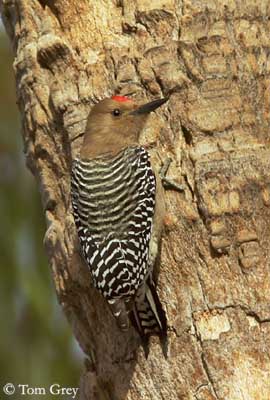
Gila Woodpecker
Melanerpes uropygialis
Piciforme Order –Picidae Family
BIOMETRICS:
Length : 24 cm
Wingspan : 41 cm
Weight : 51-79 g
LONGEVITY: Up to 7 years
DESCRIPTION:
Gila Woodpecker has black and white barred back, rump and central and undertail feathers. Face, neck and breast are pale brownish. We can see yellow tinge on centre belly.
Adult male has red patch on the top of head, and whitish forehead. Bill is pointed, black or darkish. Eyes are dark red. Legs and feet are brownish green or bluish.
Female lacks red cap. It has entirely brown head.
Juvenile is similar but duller than adults.
Fr: Pic des Saguaros
All : Gilaspecht
Esp : Carpintero del Gila
Ital : Picchio di Gila
Nd : Cactusspecht
Sd : Kaktusspett
Photographs by Tom Grey
Tom Grey's Bird Pictures
Photographs by Pete Moulton
Pete Moulton Photography
Text by Nicole Bouglouan
Sources :
HANDBOOK OF THE BIRDS OF THE WORLD Vol. 7 by Josep del Hoyo-Andrew Elliott-Jordi Sargatal – Lynx Edicions – ISBN: 8487334377
FIELD GUIDE TO THE BIRDS OF NORTH AMERICA - National Geographic Society - ISBN: 0792274512
All About Birds (Cornell Lab of Ornithology)
What Bird-The ultimate Bird Guide (Mitchell Waite)
Wikipedia (Wikipedia, The Free Encyclopedia)

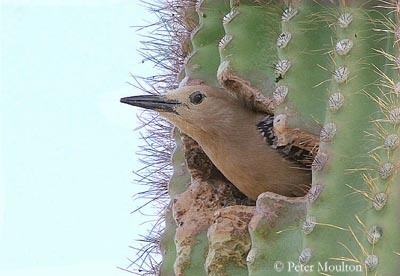
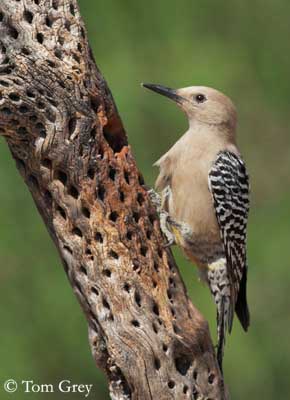
VOICE: SOUNDS BY XENO-CANTO
Gila Woodpecker’s calls include a rolling “churr”, and a loud and high pitched “yip” given in series. It also drums, and taps loudly on metal objects as a territorial call.
HABITAT:
Gila Woodpecker inhabits towns, scrub deserts with large cacti or trees for nesting, (especially Saguaro cactus – Carnegiea gigantea – Cereus giganteus), streamside woods, dry subtropical forests and riparian woodlands.
RANGE:
Gila Woodpecker is year round resident of southern and western Arizona. It is found in Sonoran Desert regions of the extreme south-western United States and northern Mexico.
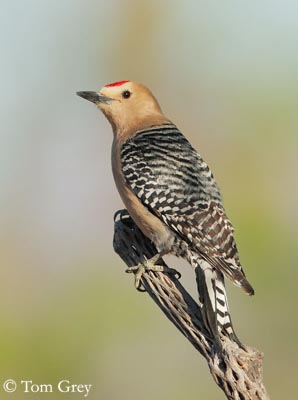
FLIGHT:
Gila Woodpecker shows conspicuous white wing patches in flight.
REPRODUCTION:
Gila Woodpecker’s nest is excavated in saguaros cacti or trees. Nest is unlined.
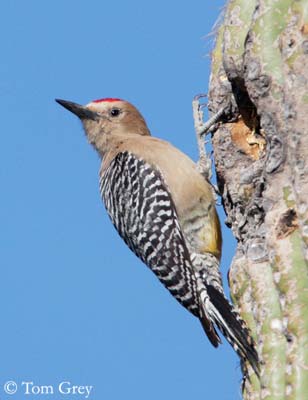
DIET:
Gila Woodpecker feeds on cactus fruits, berries, nuts and many other items in addition to insects. It visits hummingbird feeders and steal dog food. It may occasionally eat bird’s eggs and lizards.
PROTECTION/THREATS/ STATUS:
Populations of Gila Woodpeckers are threatened by human development of Sonoran Desert, and by competition for nest cavities with European Starlings.